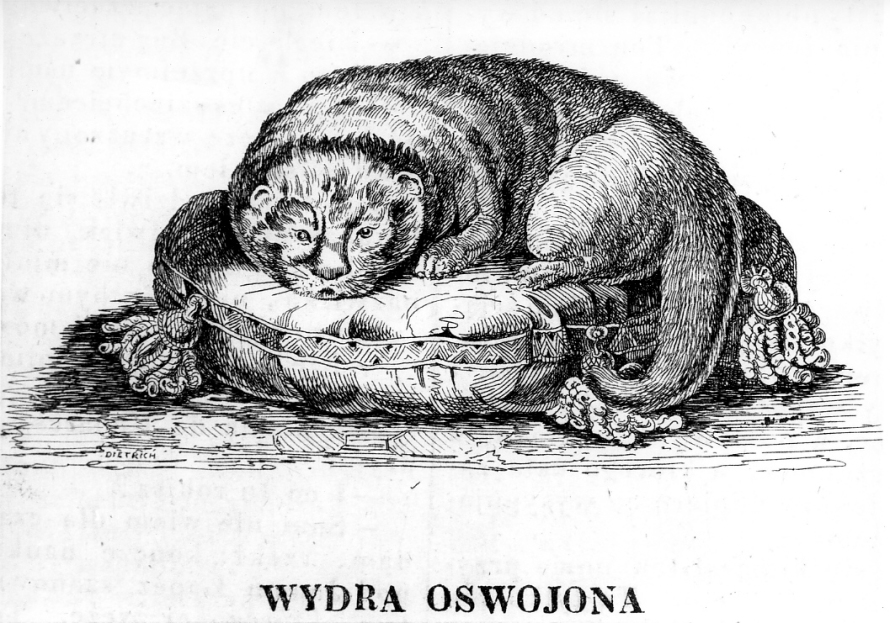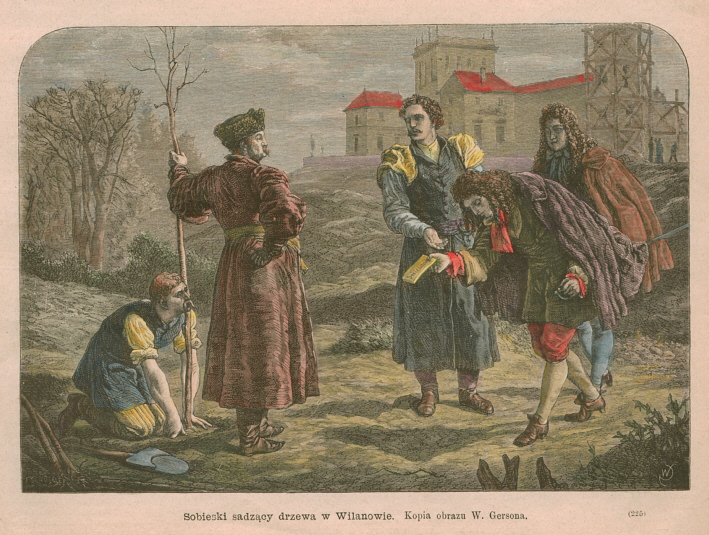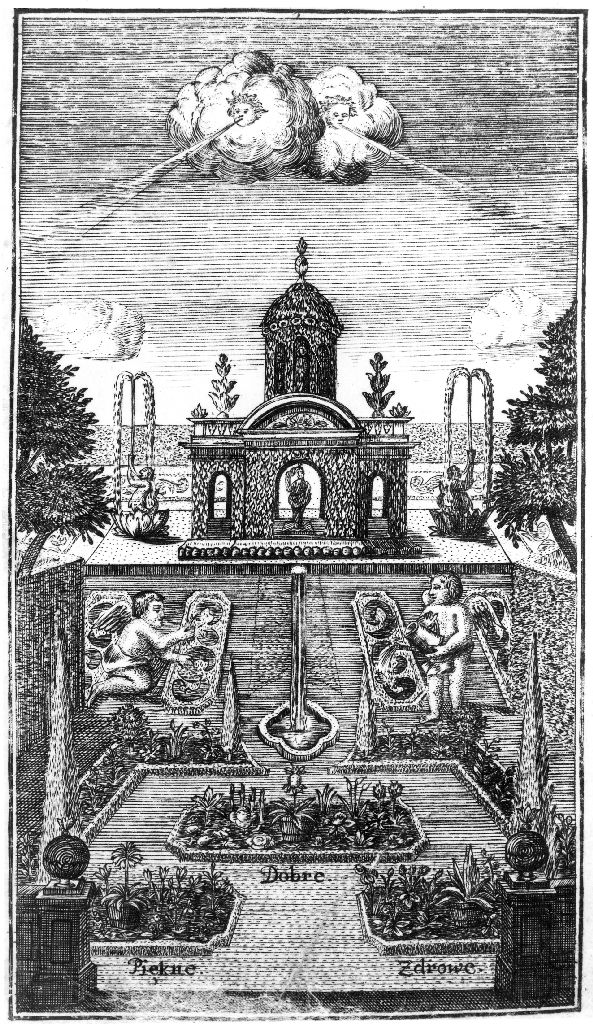Otter – a predator from the Mustelidae family adapted to living in earth and water conditions – occurred in former Poland much more frequently than nowadays. The most famous of all was the tame otter of Jan Chryzostom Pasek of Gosławice (ca. 1636–ca. 1701), otherwise known as a troublemaker and a litigious man, five times condemned to exile and even to infamy. In the section dedicated to 1680, Pasek’s renowned Pamiętniki [Memoirs] (1690–1695) contain a detailed history of the pet to which the author was extremely attached. The otter was called Bug and slept in one bed with its master, acted as his guard and his alarm clock when he was sobering up. It understood at once the commands given and could throw itself like a dog at an intruder, screaming and biting. The pet was of greatest benefit to Pasek when he voiced the command, “Jump in the water, Bug!”. The pet immediately threw itself in a pond wherein it caught fish and brought them one by one to its owner. No wonder therefore that Pasek took the otter on all his journeys; the pet bewildered casual observers and guaranteed that its master would not starve. Eventually, Bug’s fame reached Jan III who desired at all cost to see the pet in his Wilanów property. Pasek was heartbroken when parting with Bug (“I would rather have a partem of my substance given than the one I have loved so dearly”). When in Wilanów, the otter too was homesick and dispirited as it found it hard to adopt to the new place. It swiftly got rid of the dratted collar with bells and slipped out of the palace into the surrounding fields, where it was accidentally shot by a dragoon. “The whole day the king ate nothing and spoke to no-one. The entire court was distraught. Not only was I deprived of the beloved pet, but also their enjoyment was short-lived”, Pasek observed bitterly.
In 1841 Antoni Waga found a certain detail recorded 120 years earlier by Rzączyński and pertaining to a singular otter, thus proving the credibility of Pasek’s Pamiętniki, which were questioned in the course of the nineteenth century. Even earlier on, in 1837 Fryderyk Krzysztof Dietrich (1779–1847), a printmaker active in Warsaw, made an etching entitled Wydra oswojona [Tame otter], functioning as an illustration of an occasional article published in the Warsaw magazine “Muzeum Domowe albo Czytelnia Wieczorna” [“Home Museum or an Evening Reading Room”]. Although Bug itself was never immortalized in painting or print form, this is exactly what it could have looked like.
Fryderyk Krzysztof Dietrich: Tame otter, etching, 1837.


